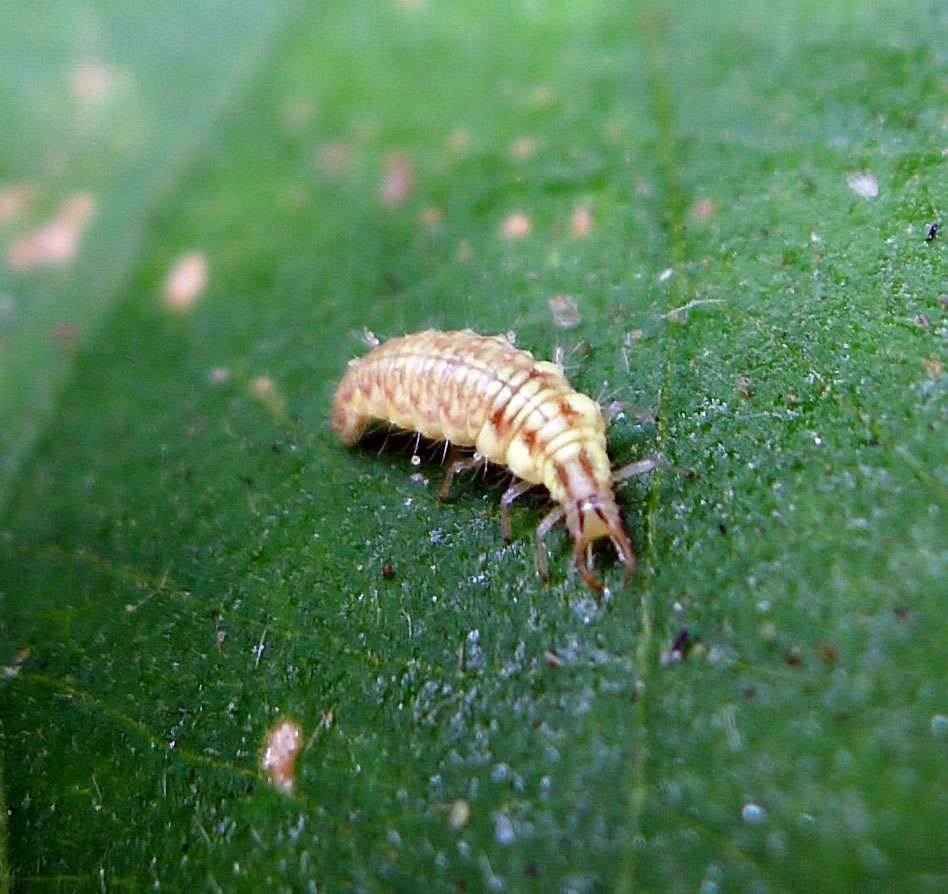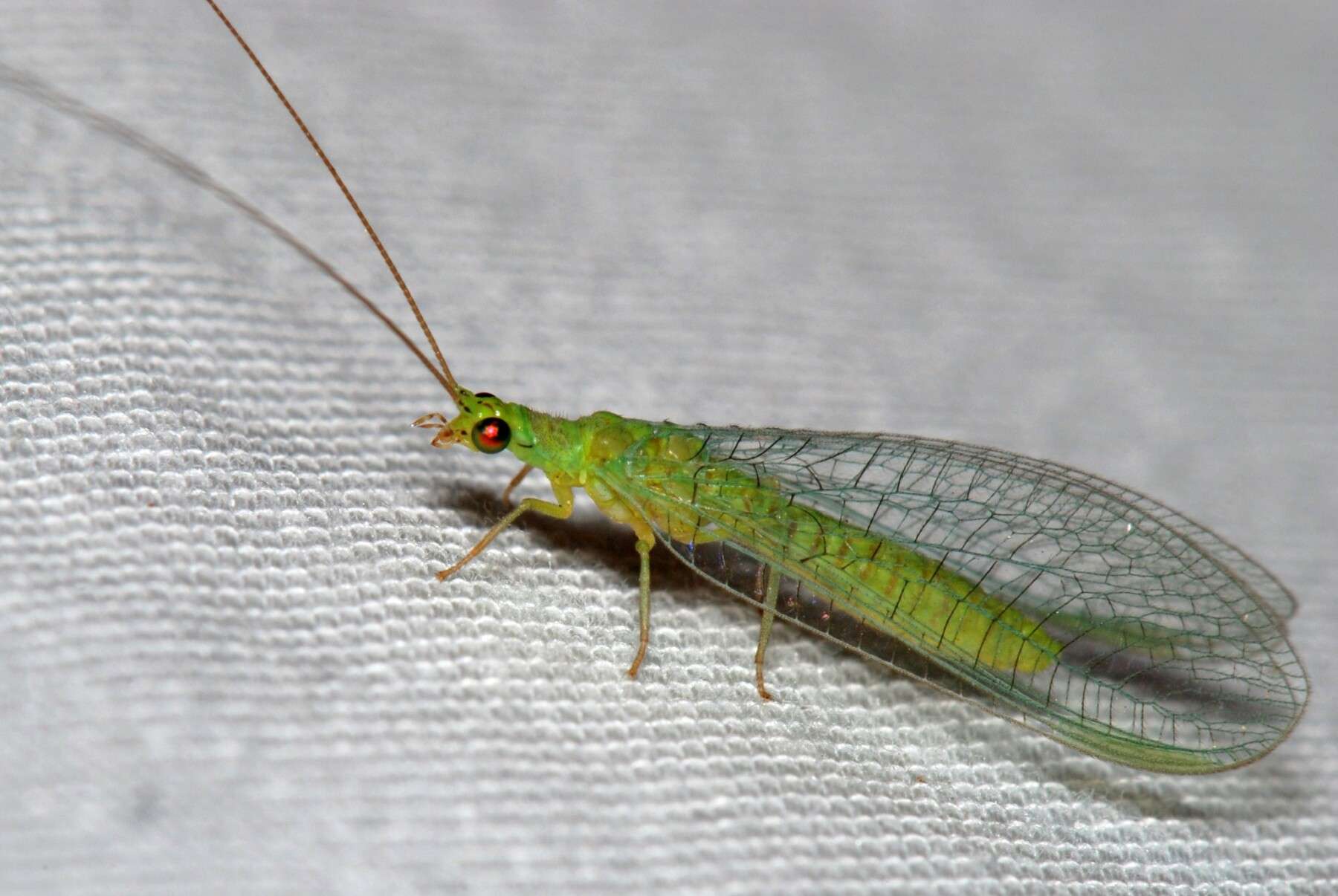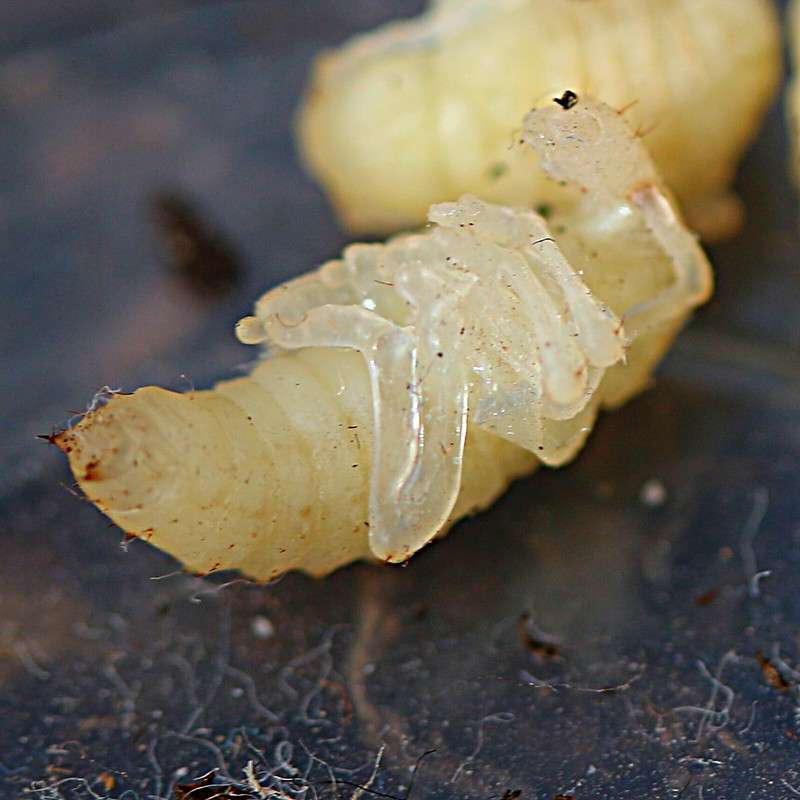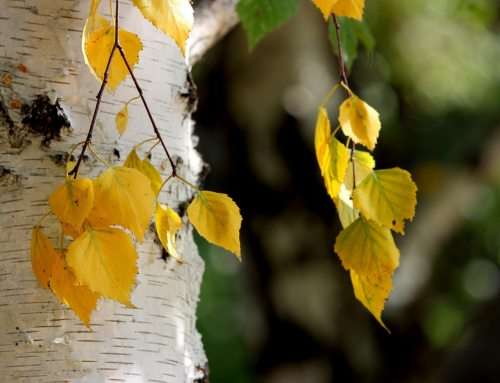Pest and Disease Control on the Nursery: Part 1
By Maria Laskey
Welcome to our first instalment of Pest and Disease control on the Nursery. This month, we have had to contend with pesky pigeons and the evil weevils, but we have also encountered lots of lovable lacewings and their lioness-like larvae.
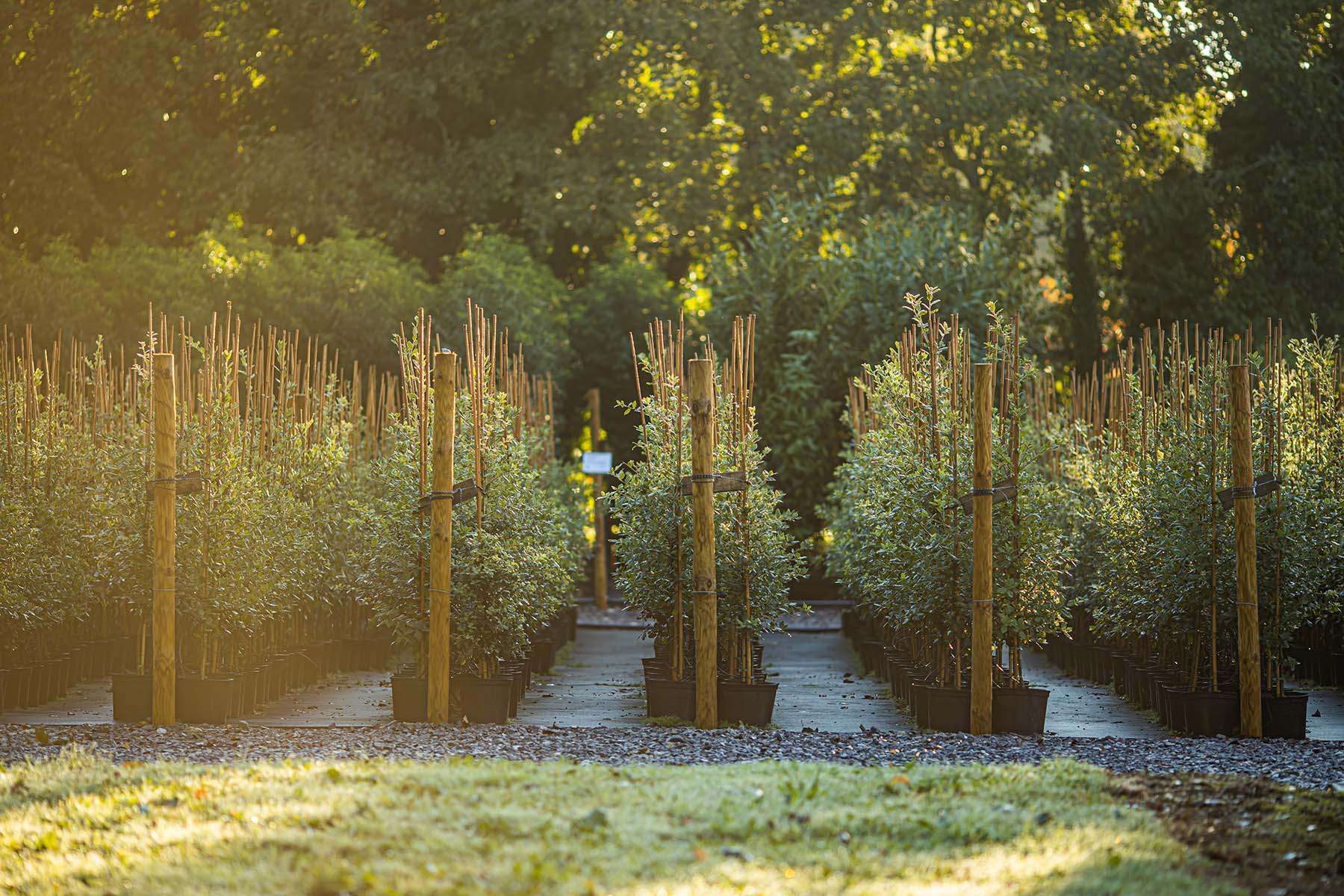
Pesky Pigeons
We noticed damage on our lovely 5-tiered fruit trees and observed that they had become a popular pigeon perch. Pigeons are quite fond of flower buds and berries, but their clumsy nature prevents undue care being taken! Not only had they caused damage by breaking smaller branches with their big bottoms, but they had also made a right old mess of the foliage too.
We had a little think and came up with the idea of attaching pieces of barricade tape onto the bamboo cane frames of the fruit trees and let the ends catch in the wind to frighten the pigeons. The effect was immediate. However, it was also temporary. After a while, the pigeons figured out that our tape created no real threat. Although less damage was caused by the pesky pigeons after the tape was attached, it wasn’t enough to deter them completely. Something more intimidating was needed. Enter…Reggie!
Again, the effect was instantaneous. We hoisted Reggie on a 10ft bamboo cane and strapped her to the rails next to the fruit trees. Our Reggie’s wings catch the wind and her presence has enabled our fruit trees to recover from the damage and now look beautiful again. To this day, pigeons will not fly near this bed. Nursery 1, Pigeons 0.
Beautiful little green lacewings and their venomous, ravenous little offspring
Delicate little Green Lacewings can be spotted fluttering about between May and September. The pretty adults live quite inconspicuously, surviving on nectar, pollen, aphids and the honeydew the aphids secrete.
Their offspring, however, are bulky, big jawed, ballsy, single-minded aphid eaters, capable of ripping open the hard waxy cuticle layered shells of aphids and injecting them with a paralysing venom.
Somewhat affectionately known as Aphid Lions, these little munching machines are aggressive predators. They seek out aphid farms – farms created by ants, herding up aphids so the ants can harvest that sweet, sweet honeydew. In these situations, the lacewing larvae can be outnumbered by hundreds of ants. They care not. Lacewing larvae are not concerned by being outnumbered and are also not afraid to attack pests much larger than themselves.
Autumn is the time of year when the overwintering eggs of aphids and their creepy crawly relatives – the Thripps (which Aphid Lions also find quite tasty) – are most abundant. Therefore, it could be beneficial to introduce lacewing larvae into the garden, since they eat a variety of nasty pests and can be a way of reducing their numbers, particularly as we approach autumn.
Fortunately, the Aphid Lions are prevalent from May through September. Each Aphid lion will devour 200 aphids a week during their two-to-three-week developmental period, before they start their pupal phase and transition into pretty, winged adults.
The Dreaded Vine Weevil
We couldn’t talk about Autumnal pests without mentioning our old nemesis, the vine weevil. The antithesis of our situation with our friend the lacewing, the larvae of the vine weevil are actually what cause the most damage. Sure, no one likes leaves with big ugly irregular notches eaten out of them by these clay-coloured beetles, but the vine weevil offspring, both the larvae and the pupae, can devastate the roots of a lot of plants: indoors, outdoors and in glasshouses. The eggs are laid in the soil and hatch into brown-headed larvae, 7mm long, 10-15 days later, emerging in warm Autumn conditions.
On the Nursery, there are several species of live microscopic nematodes we use that absolutely love hunting down vine weevil larvae. We use this treatment at least twice a year; once in Spring and once in Autumn and the species of nematodes we use depends on the temperature of the soil at the time of application. As a result of this, we are able to avoid any nasty weevil infestations at Nicholsons. We also make sure all goods coming in are rigorously checked and treated, to make sure we don’t bring any of these pests into our nursery as they are horribly common creatures. We apply the nematodes to our plants systemically, using two giant hoses and a clever contraption called a Dosatron. However, gardeners at home can mix the nematodes with water in a watering can, which can be applied directly to the plants you want to protect. Easy peasy!
We always apply the nematodes to pots we have recently irrigated, the nematodes need to use the space the water provides in the pots to move freely and seek out the vine weevil larvae. So, remember to give your garden or selected pots a good soaking before the treatment.
Nematodes can cover an inch of soil every hour, but they are not so great at moving horizontally so keep that in mind when applying.
Until next time, fellow fauna, and flora friends.
The Nursery Team.

